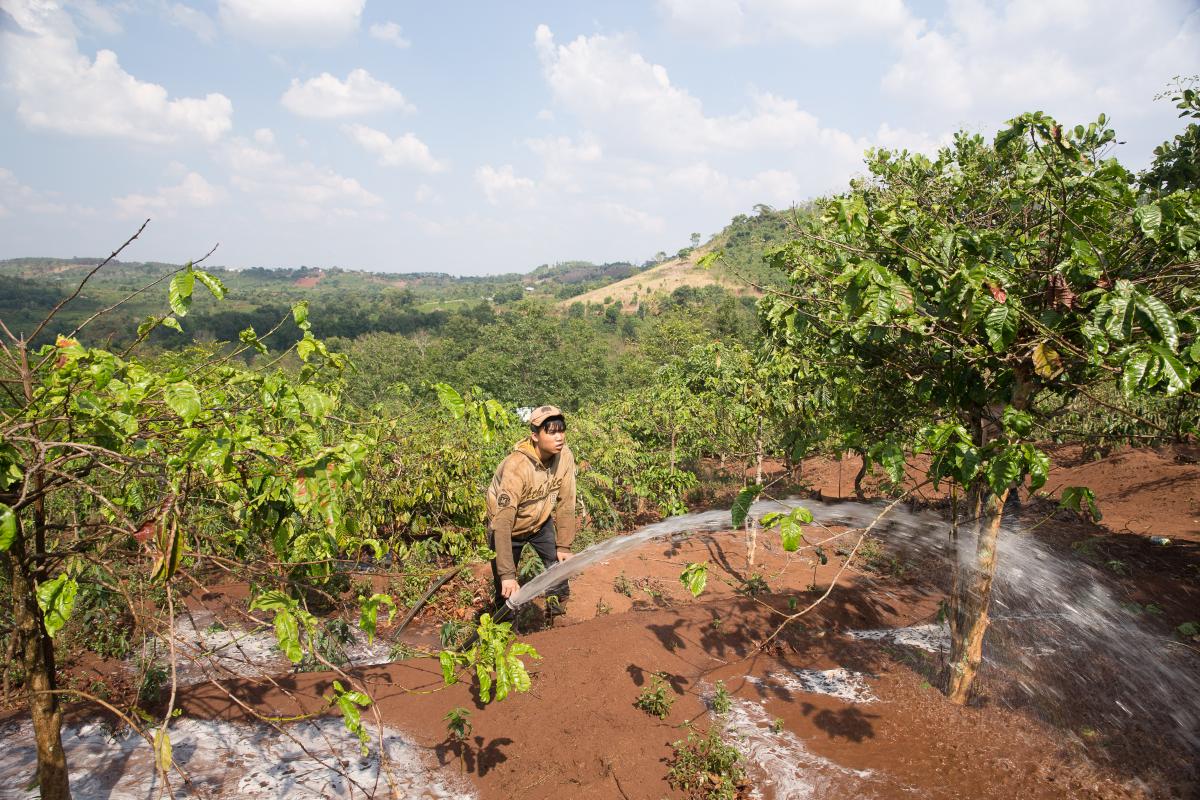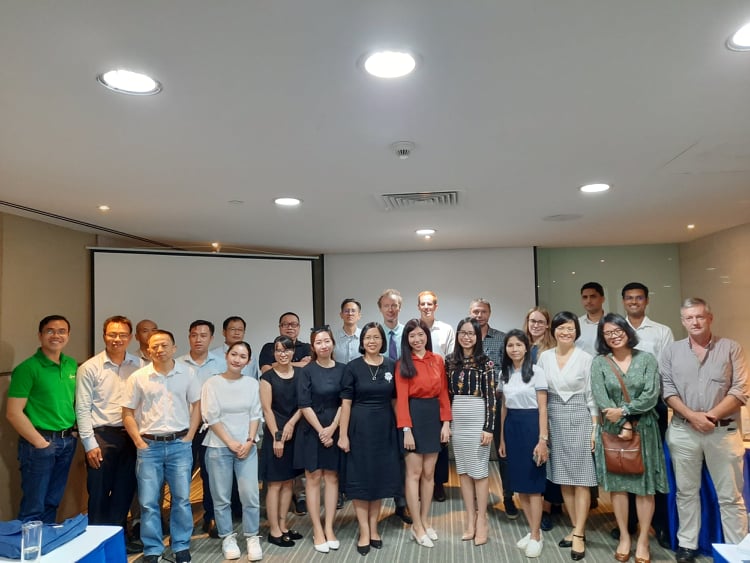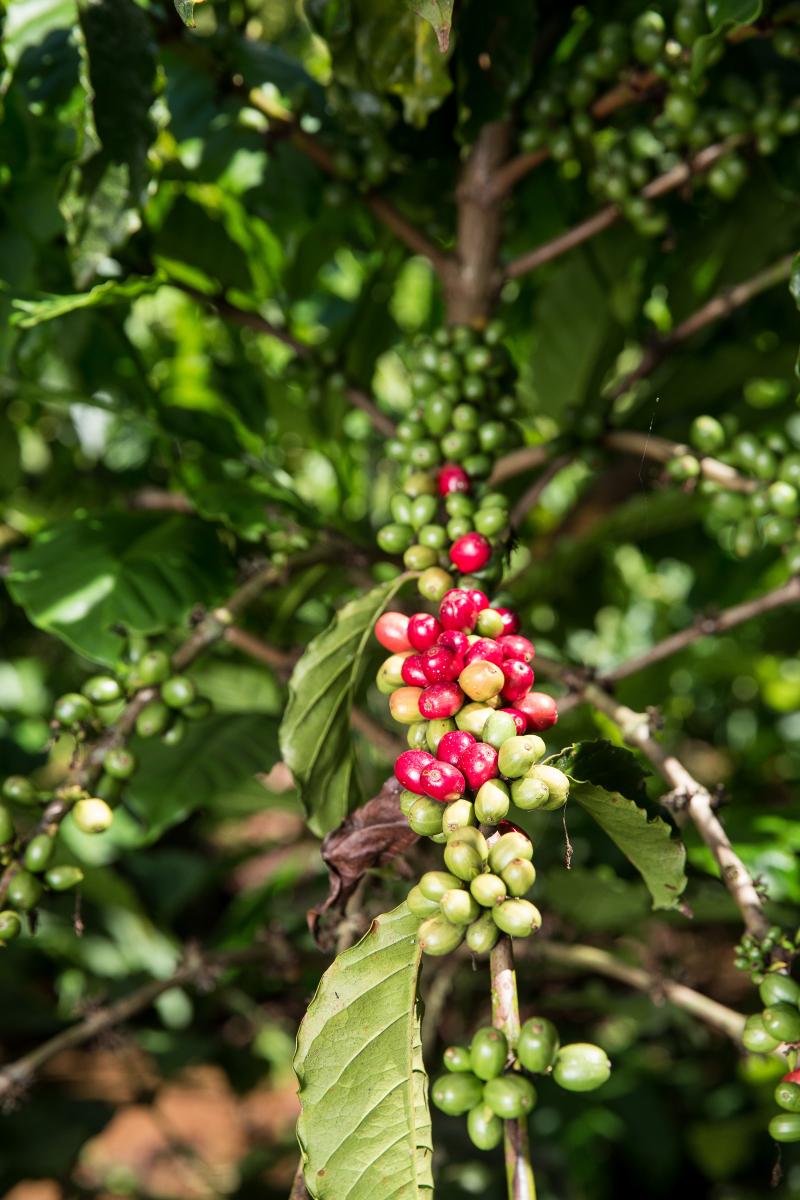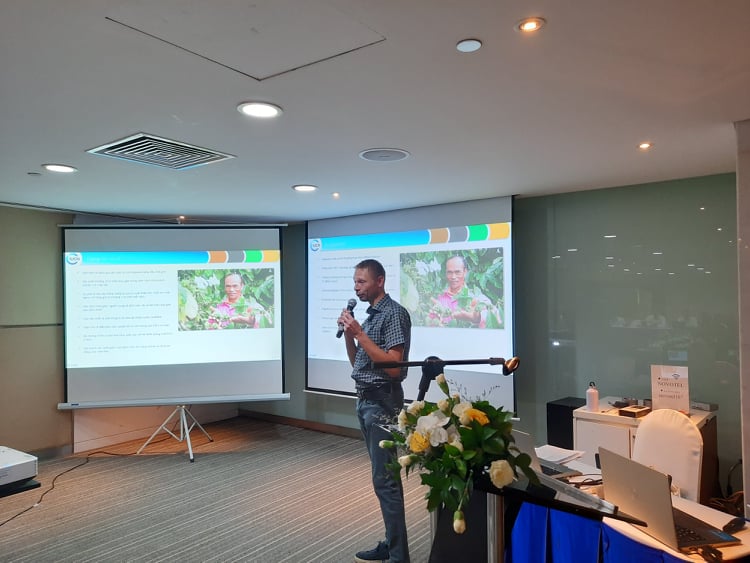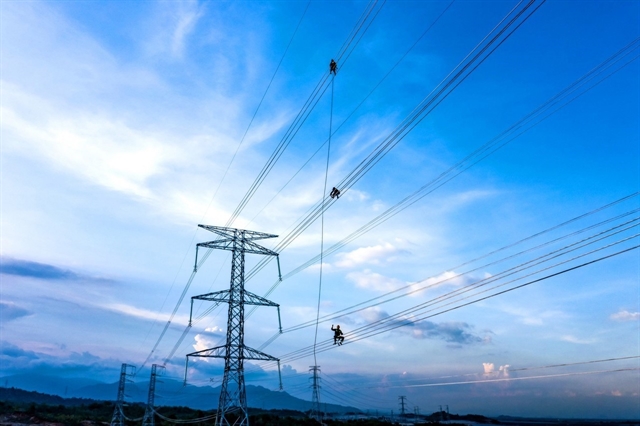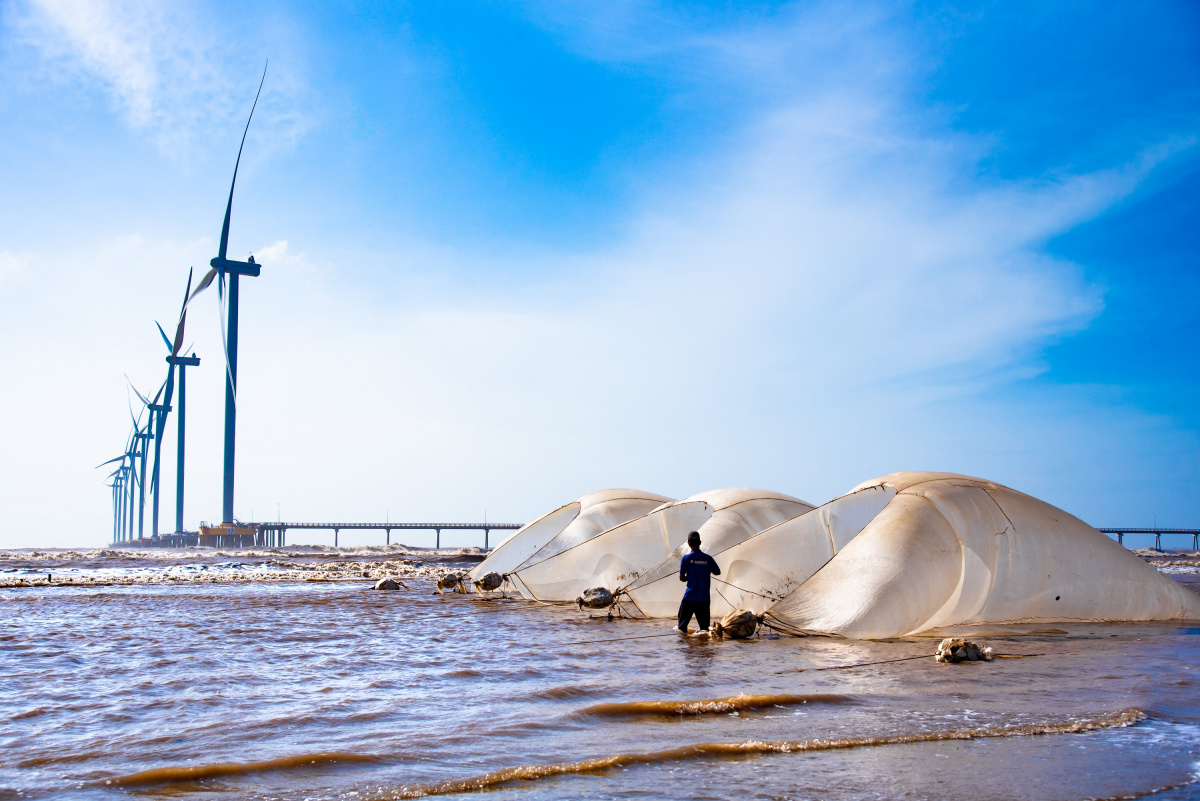Business consultation on coffee transformation and water use in Vietnam’s Central Highlands
On September 10, 2020, IUCN organised a business consultation in Ho Chi Minh City on opportunities to transform coffee production in the Central Highlands to a more diverse and climate resilient crop mix.
The event, which attracted representatives from 15 coffee roasters, retailers, and buyers was co-funded by two IUCN initiatives: Vietnam Business for Environment (VB4E) (www.vb4e.com) and Building River Dialogue and Governance (BRIDGE) (https://www.iucn.org/theme/water/our-work/current-projects/bridge).
Coffee is Vietnam’s most valuable agricultural export. Export volumes peaked in 2018 at 30 million bags worth $3.54 billion and the industry supports the livelihoods of over 2 million people, mainly in the Central Highlands. However, coffee production there is suffering from wasteful irrigation, seasonally declining water tables, more frequent droughts, and declining productivity, which together threaten supply chains at a time when global coffee consumption is growing at 1-3% a year. During the 2016 drought, hundreds of reservoirs ran dry and over 165,000 hectares of coffee plantation were affected, of which 40,000 hectares were lost.
At the consultation, Dr. Dave Dhaeze presented the results of a study he prepared for IUCN on the costs and benefits of transforming 200,000 hectares of coffee monoculture in Dak Lak Province into a less water consuming coffee, pepper, durian, and avocado crop mix. This would produce 2.5 times the crop value, maintain existing coffee production, and save about 150 million cubic meters of water a year in reduced irrigation. The total cost is about $300 million over 30 years (equivalent to $60/farmer/year), a trivial amount relative to the economic and environmental benefits.
Participants raised questions about the feasibility and the scale of the transformation. Questions covered the ability of the market to absorb a large increase in pepper, durian, and avocado, the need to include additional tree crops, whether this approach provides a better model than certification to deliver genuine improvements in environmental sustainability, the need to pilot this approach at a sufficiently large scale such as a district or sub-river basin, and the need for a more detailed study 3-5 year period, which is a more relevant time-period for farmers.
Perhaps the greatest challenge is that it would take farmers 10 years to breakeven (i.e., NPV > 0). Covering this income gap would require active government participation. The next steps therefore is a government consultation in Hanoi.
